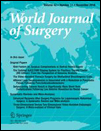Analysis of Potential Alterations Affecting SETBP1 as a Novel Contributing Mechanism to Inhibit PP2A in Colorectal Cancer Patients
Electronic supplementary material: The online version of this article (https://doi.org/10.1007/s00268-018-4684-9) contains supplementary material, which is available to authorized users.
Abstract
Background
The functional loss of the tumor suppressor protein phosphatase 2A (PP2A) occurs in a wide variety of human cancers including colorectal cancer (CRC), and SET overexpression has been reported as a key contributing mechanism to inhibit PP2A. Although SET binding protein 1 (SETBP1) overexpression and gain of function mutations have been described in several hematological malignancies as common events that increase the expression levels of the PP2A inhibitor SET, thereby leading to PP2A inactivation, the potential existence of SETBP1 alterations in CRC still remains unexplored.
Methods
We studied the expression profile of SETBP1 by Western blot in a set of CRC cell lines and patient samples. Moreover, we performed co-immunoprecipitation assays to analyze the formation of the previously reported SETBP1–SET–PP2A inhibitory complex. Furthermore, we evaluated the mutational status of SETBP1 by pyrosequencing assays in a cohort of 55 CRC patients with metastatic disease after the immunohistochemical characterization of SET and p-PP2A expression in this cohort.
Results
We found high SETBP1 expression in several CRC lines but only in two of the patients analyzed. In addition, we demonstrated the formation of the SETBP1–SET–PP2A heterotrimeric complex in CRC cells. However, we failed to detect SETBP1 mutations in any of the CRC patient samples included in the study.
Conclusions
Our results suggest that SETBP1 expression is mainly similar o lower in colorectal cancer tissue compared to normal colonic mucosa. However, its overexpression is a low prevalent alteration which could contribute to inhibit PP2A in CRC through the formation of a SETBP1–SET–PP2A complex in some CRC patients. Moreover, SETBP1 mutations are, if exist, rare events in CRC patients.




